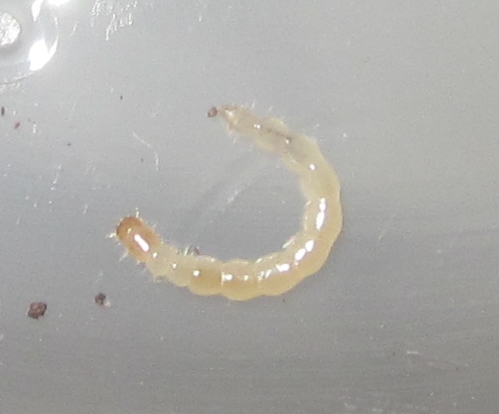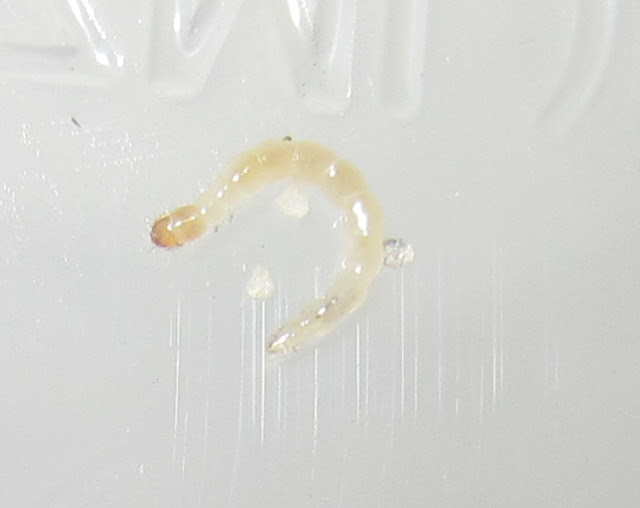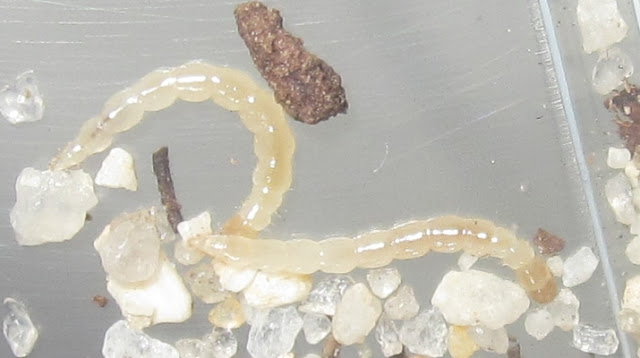I've isolated what larvae I've found so far into 2 oz deli cups filled with a thin layer of moist coconut fiber, and am feeding them pre-killed Compsodes schwarzi, which I've buried partially so the larvae can easily access them.
Here are some pictures of one of the adorable hatchlings:
I was surprised at the size these hatched out at, about 3 mms long! Doesn't seem that big, but the Pyrophorini click beetles I've been breeding have all hatched out at 1 mm or less, so kind of a big deal for me lol! Guess it makes sense considering how large Alaus are, and how big their eggs are too.
Unfortunately it does not look like I'll be breeding Alaus zunianus, my female has shown no signs of oviposition, I see no eggs in her substrate, thus I believe she is unmated. 😭 Makes sense considering she was collected in May, the very beginning of their activity season, and yet despite being kinda old she is not showing signs of aging, likely because she is not expending energy to make eggs, so she's gonna live longer as a result. Oh well, not much I can do, sucks because that is my dream Alaus, but I guess I'll have to try again some other time. At least the A.cf.lusciosus for sure were mated. 😅
I also have found quite a few larvae in my Triorophus/Trimytis "Fort Stockton, TX" setup! 😀 Now, I technically don't know which species laid, I mean both of them could have if that Trimytis ended up being a female. But judging by how many larvae are in there, I WANT to say that some of them have to be Triorophus. The larvae of both these genera will probably look much the same at this stage, considering how closely related they are.
In any case, this is the first time I've heard of someone breeding an Edrotinid, so here are some notes on the larvae. They are soft bodied and pale, similar to many other Pimeliinae larvae, and actually seem to be communal and not too cannibalistic, otherwise they'd have been eating each other by now. They are going to town on the dog food in there though, and I have added some oak leaf litter to the substrate too, which they are either ignoring or eating very slowly. They are most numerous in the driest part of the substrate, interestingly enough.
Here are some pictures of a few of them:
Cute little larvae for sure, will be interesting to see what they mature into, Triorophus, Trimytis, or both? Will keep you all updated on them, and will try to get some pictures of them when they are larger too!
Lastly, no pics since I've technically bred these species before, but I found larvae in both my Eleodes hispilabris "South Texas Race" and Eleodes obscura glabriuscula enclosures! 😁 Happy to have gotten offspring from these two species, hopefully they grow well for me! Now to just get larvae from my E.debilis and E.goryi...
Anyways, that's gonna do it for this post, thanks for reading, I hope you all enjoyed, stay safe, and I'll see you next time! 😉






















No comments:
Post a Comment